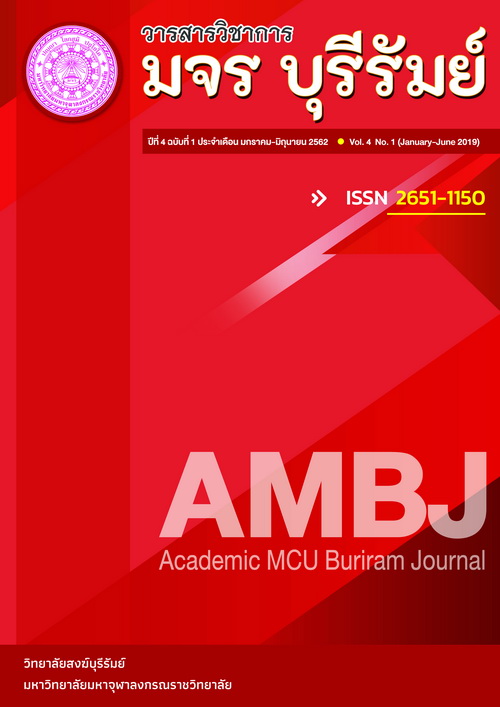The Wisdom of Original Silk Weaving of Keayai Community in Muang District, Surin Province
Keywords:
Local Wisdom in Silk Weaving, Ancient Silk Pattern StyleAbstract
The purpose of this study is 1) to study the local wisdom of ancient silk weaving pattern style from Keayai Community, Muang District, Surin Province, 2) to study the meaning beyond each ancient pattern style, and 3) to study and find a guideline on preservation of wisdom of ancient silk weaving pattern style from Keayai Community, Muang District, Surin Province. This is a qualitative research of sources from document and field study using primary survey, interview, observation of group discussion, and operational meeting. The information collected is analyzed to find the answer set under research purpose. This research found that;
- The wisdom of ancient silk weaving pattern style from Keayai Community, Muang District, Surin Provinceare comprised in areas of raising silk worm, silk thread production, dyeing, designing pattern, weaving technique, tools and equipment, processing, and marketing. The raising silk worm, silk thread production, dyeing, and designing pattern of the Keayai Communityis a knowledge that was passed on for generations. It is an important by product of human relation with the nature. Most of the weaving is influenced by their ancestors which reflects tradition, preferred values, preference, identity, personality of the group and their weaving technique.
- On ancient weaving pattern style; the patterns can be categorized into 3 main types; the men/women clothing which differentiate into different patterns of normal pattern, Saku pattern, Aun-lui-seem pattern or Ja-pan-shua, um-prom pattern, hole pattern, Sea weed pattern, La-berg clothing which is a local Yok-dok pattern, Sarai or sarong for women and men, and Kra-neao cloth. The second type is hole-pro or ho-Sabai. They are separated into two categories which are women Sabai or Sha-nook-luek. They are background cloth. The popular color for this type is white. They are used for cross shoulder clothing for both front and back. The popular weaving is to add pattern later in yok-dok style or Yok-Yao. The numbers of Takor may range from 3, 4, or 6.
3. For the preservation guideline of this local wisdom of ancient silk weaving pattern style from Keayai Community, Muang District, Surin Province. On raising silk worm, it is found that there is a decrease in silk worm raising. This is mainly due to the growth of population and expansion of living space which in turn decrease the space for silk worm raising. Another factor is the change of purpose of production to become more commercial inclined together with a rush in production to feed the market demand. As a risk aversion from silk worm raising, many producer now purchase silk from the market as it is faster and easier and provide silk sufficiently. These led to the decline in raising silk worm to the family level that only grows some for familial usage and for the purpose of preservation itself. Nonetheless, the researcher propose a guideline on how to preserve the practice of raising silk worm whereby the silk gained is limited and does not suffice the demand of the group and thus this spurred the producer to purchase silk from the market instead. This increase production cost and reduces potential benefit. Thus, the people request for space and funding for raising silk worm from the municipality which is currently under processed.
Downloads
Published
How to Cite
Issue
Section
License
ทัศนะและความคิดเห็นที่ปรากฏในบทความวารสารฉบับนี้ถือเป็นความรับผิดชอบของผู้เขียนบทความนั้น ไม่ถือเป็นทัศนะและความรับผิดชอบของบรรณาธิการ





